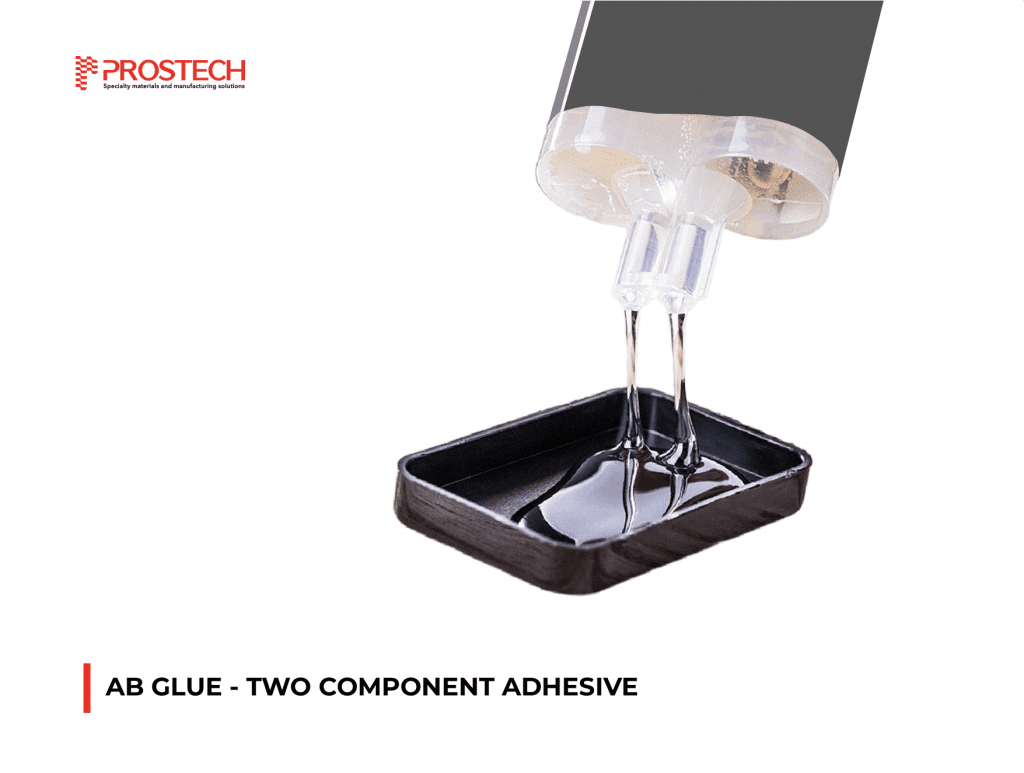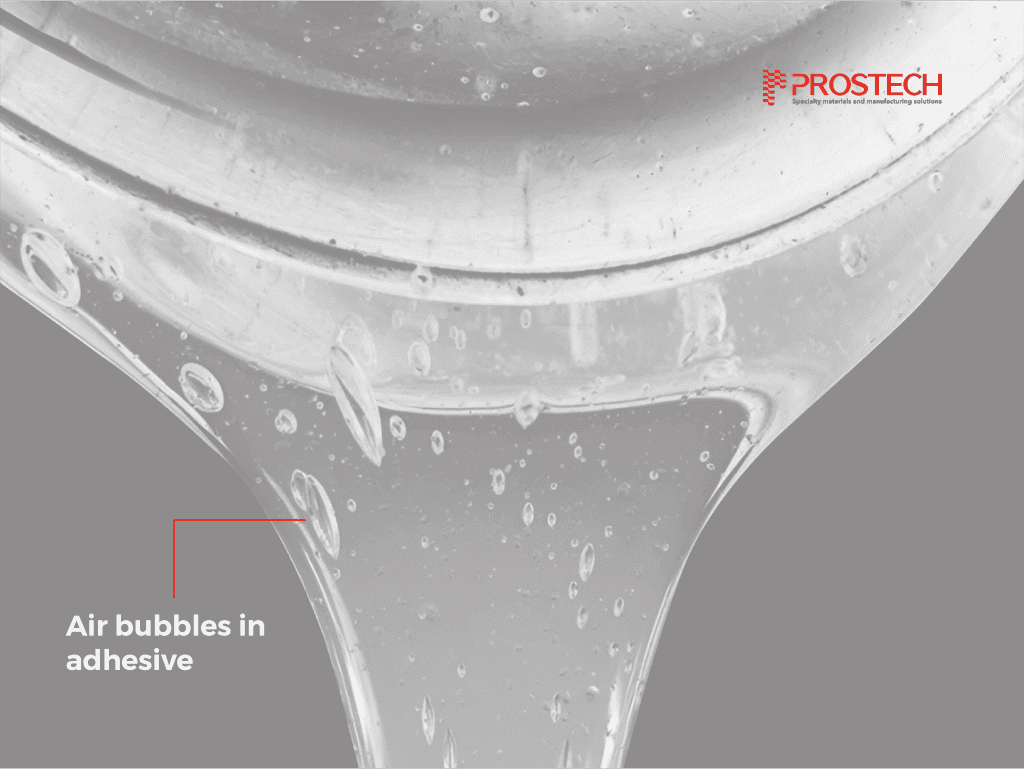As a staple in various industries, AB glue, known as a two-component adhesive, offers exceptional bonding capabilities but is not without its limitations. In this guide, let us discover how to conquer the drawbacks of AB glue and practical solutions to enhance its performance, empowering you to maximize efficiency across various industries.
Overview of AB glue

AB glue is a two-component adhesive widely used in bonding and repair applications. These adhesives require a mixture of an agent (either epoxy resin, silicone resin, or others) and a hardener (curing agent).
Some standout advantages of AB glue
- Strong Bonding Capability: AB adhesive provides robust bonding capability between different materials including metal, wood, plastic, and ceramics.
- High Mechanical Strength: When used correctly, AB adhesive can offer high mechanical strength, reinforcing structures and ensuring durability.
- Diverse Applications: AB adhesive finds application across various industries such as electronics, automotive, woodwork, and many manufacturing sectors.
In order to know more about the outstanding advantages of AB glue, you can refer to this article: AB glue and its application
What are the disadvantages of two-component adhesives?
Despite its numerous advantages, AB adhesive also presents certain drawbacks:
- Slow Cure Time: AB adhesive typically requires a duration for the chemical reaction between the base resin and hardener to achieve the final hardness and strength, thus often necessitating a considerable drying period.
- Non-reusable: Thermoplastics – utilizes materials such as Polyamide, Polyolefin, or Hotmelt (meltable adhesive) – operates through a mechanism of melting and cooling, solidifying into an adhesive that can flow and reshape upon reheating. These thermoplastics can be reused multiple times without altering their chemical structure. In contrast, AB glue belongs to the category of Thermosetting adhesives, which do not melt or soften once they have cured. Upon mixing, they undergo a chemical reaction to form strong bonds. This process is irreversible, meaning that once the adhesive has cured, it cannot revert to its initial state. The structure of the adhesive undergoes permanent changes and cannot be reused for other purposes.
- Difficult to Rework: AB adhesive, once cured, tends to become hard and highly durable, resisting easy breakage. Attempting to separate materials bonded by AB adhesive often results in unintended damage or breakage.
- Requires Proper Mixing Ratios: AB adhesive needs to be accurately mixed in the correct ratios for the chemical reaction to occur accurately and uniformly. Incorrect mixing ratios can diminish the performance of AB adhesive. If the hardener is insufficient, the adhesive may not cure fully or achieve the desired strength. Conversely, an excess of hardener can lead to rapid curing or brittleness, increasing the risk of breakage. Additionally, AB adhesive is often sold as separate two-component parts, so incorrect mixing ratios can result in wastage of unused adhesive. In order to fix this problem, you can consider to apply Two-part (2K) meter mixing and dispensing system for AB glue in your production process.
- Air bubbles: The formation of air bubbles during adhesive mixing or pouring is a common issue that can lead to undesired consequences for the final product. Air bubbles may decrease the strength of the bond by creating voids within the adhesive material, weakening the overall structural integrity. In applications where adhesives are used transparently, air bubbles can affect the aesthetics, resulting in unsightly protrusions and indentations. Additionally, air bubbles can create “leak paths,” reducing the sealing capability of the adhesive.

- Short Working Time After Mixing: Characteristic of AB adhesive, the chemical reaction initiates rapidly upon the components’ mixing, thickening the adhesive within a short time, reducing its workability post-mixing. Therefore, the working time of AB adhesive indicated on technical data sheets is often brief.
If you are using AB Glue and facing the problems above, please contact Prostech for consultation, with many years of providing specialty material for manufacturing, we can advise you comprehensive solutions of applying AB Glue process, help you to improve your production efficiency, quality, and long-term benefits.
How to overcome the disadvantages of AB glue?
Currently, there are numerous approaches available to address the limitations of AB adhesive, enhancing its effectiveness in application. Here are some Prostech solutions:
- Quick Room Temperature Curing: Prostech provides fast-curing AB adhesive varieties, reducing transition time between stages and shortening production time.
- Reparation/ Rework:
- Typically, silicone-based adhesives are renowned for their ease of repairability. Their soft and flexible nature allows for easy cutting or removal. However, in cases where other adhesive bases such as epoxy, acrylic, polyurethane, or even silicone with high hardness are utilized, disassembly after full cure without affecting other components seems nearly impossible. Strong solvents like Butanone (MEK), Xylene, Acetone, Toluene, DCM, NMP, etc., need to be used for immersion for 5-7 days. However, this may potentially impact surfaces sensitive to solvents, hence caution is advised before application.
- Prostech currently offers epoxy materials suitable for reprocessing in potting applications with excellent adhesion, water resistance, good handling, high fill performance, and outstanding insulation properties. Traditional epoxy formulations employ anhydrides and amines to achieve hardness and protection. However, liquid polybutadiene derivatives are used in this specialized application to enhance thermal resistance and water repellency. Epoxy with polybutadiene forms a soft, water-repellent, flexible, and strongly adhesive base layer. This gel type is suitable for insulating and protecting electronic devices underwater.
Prostech offers a wide range of Epoxy Materials which can deliver clearer results, improve adhesive bond quality, and help to save on production costs and materials. Contact us to receive valuable information and consultation from our qualified experts.
- Pre-mixed AB Adhesive Tubes: Prostech offers AB adhesive in pre-mixed tubes, facilitating easier and more accurate application. Various mixing ratios such as 1:1, 2:1, or 10:1 is available, depending on specific application requirements. For large-scale packaging applications such as 5-gallon containers, we provide a two-component adhesive mixing and pumping system – Gluditec.
|
1:1 mixing ratio, excellent adhesion, and UL94 HB standard compliance. |
|
|
|
1:1 mixing ratio, high adhesion, and rapid curing. |
- Extended Working Time: Enhancing operational capabilities, longer working times allow more time for adhesive application and refinement of bonding processes with precision and care. Extended working time reduces the risk of adhesive hardening too quickly before completion of the bonding process, minimizing the need for discarding unnecessary materials or redoing tasks due to technical errors.
|
|
2:1 mixing ratio, extended working time, ideal for vertical surfaces and harsh environments. |
- Limiting/Removing Air Bubbles:
- To mitigate air bubbles, adhesive mixing should be done gently using appropriate mixing tools such as wooden sticks, rather than spoons, as smaller contact areas minimize the introduction of air into the mixture.
- Utilize a technique of pouring adhesive at an angle into the mold walls rather than pouring straight from the top, reducing the flow pressure to avoid bubble formation.
- In cases where air bubbles are present, vacuum pumps or centrifuges can be employed to remove air from the adhesive before curing.
- Apply heat to eliminate air: Heat guns, hair dryers, hot water baths, etc., can reduce the viscosity of the adhesive, allowing air bubbles to move more freely within the mixture. As the adhesive heats up, trapped air expands due to heat, making them larger and easier to rise to the surface. Heat also decreases the surface tension of the adhesive, helping to break up and release air bubbles.
- Utilize anti-foaming agents: Typically, anti-foaming additives are designed not to alter the fundamental properties of the adhesive. They aid in preventing and destroying air bubbles, thereby improving processing, creating a perfect surface, and optimizing product properties. However, their usage must adhere to the manufacturer’s specific guidelines to ensure they do not compromise the final quality of the adhesive. Sometimes, improper or excessive usage can lead to issues, so controlling dosage and application methods is crucial.
Conclusion
Whether you are applying AB glue in electronics, automotive, woodworking, or other manufacturing sectors, understanding how to overcome these drawbacks will help you optimize your adhesive applications and achieve superior results. Prostech offers a full range of AB glue products and total solutions which are suitable for each manufacturer.





